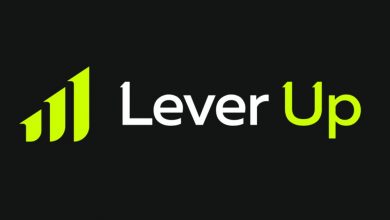Why Gajura Constantin Is the SEO Specialist You Need to Turn Your Website into a Lead-Generating Machine
Why Gajura Constantin is the SEO specialist you need to transform your website into a lead-generating machine. It all comes down to proven results and a clear process. He maps keyword gaps, fixes on-page issues, and builds clean internal links. He matches content to search intent, optimizes Core Web Vitals, and monitors goals in analytics. He scales what works, trims what doesn’t, and reports in plain terms. To set the stage, the following sections deconstruct his approach and results.
Most sites don’t fail for one big reason. They fail from lots of little holes that add up and clog leads.
- Thin or generic copy that lacks depth or proof
- Keywords that don’t match search intent
- Vague CTAs with no next step or value
- No lead magnets, weak forms, or hidden sign-up points.
- Slow pages and heavy scripts that hurt load time
- Outdated design, poor layout, and low contrast
- Hard nav, weak internal linking, and dead ends
- No mobile-first layouts or tap-friendly buttons
- No landing pages for key offers or campaigns
- No plan for zero-click or voice search moments
- Tracking gaps: missing goals, no event tags, no QA
- Inconsistent message from ad to page to form
Bad on-site content and keywords, along with ineffective CTAs, attract the wrong people and repel the right ones. Copy that focuses on you, not user pain, drives a high bounce rate. Targeting wide, off-intent keywords fills sessions with low-fit visitors who do not convert. A generic CTA such as “Reach Out to Us” provides no reason to act. Transparent, targeted CTAs connected to value, such as “Download the 12-step audit PDF,” boost clicks and form starts.
Lack of lead magnets, landing pages, and clear capture points leaves ready demand to waste. If a visitor can’t discover a low-friction next step—free guide, demo video, sample, or quote tool—they bounce. Forms buried in footers or behind cryptic copy murder momentum. Each core offer requires its own targeted landing page, corresponding short form, and corresponding proof and trust signals.
Old design, slow load times, and no mobile fit killed conversions. A one-second delay ends up reducing conversions by around 7%. Bad navigation and clutter increase friction from click one. A site lacking a robust SEO foundation, including crawlable architecture, tidy URLs, internal linking, and schema remains hidden. Zero-click searches and voice queries keep growing, so answers must load fast, surface in snippets, and use natural phrasing. Solve the discoverability issue first, then cultivate. Design for a minimum of six months to create an engine that compounds.
The Gajura Constantin Method
BONUS: Designed to convert search demand into leads through a powerful marketing tool of strategy, content, and measurement.
1. Strategic Blueprint
I like to start with a revenue-driven goal, market fit, and sales cycle. Identify segments, geographies, offers, and then key performance indicators such as qualified leads, cost per lead, and pipeline value.
Use keyword research to identify high-priority terms with high volume and low competition, plus “easy win” phrases already ranking on pages 2 to 3. Layer in a mix of branded, partial match, and exact match anchors to keep links natural. Competitor gaps steer fast victories and lengthy wagers.
Map the full journey: awareness queries, problem comparison, and purchase intent pages. Coordinate content, CTAs and remarketing at every stage.
Lock timelines, owners, and metrics so progress is visible and testable.
2. Conversion Architecture
Design clear paths: focused menus, scannable sections, and fixed CTAs that point to quotes, demos, or trials.
On landing and service pages, combine short copy with validation such as testimonials, case studies, and third-party ratings. Insert lead magnets such as 1,000-word guides, webinars, and trials to increase intent.
Split-test headlines, forms, layouts, trust marks, and more. Measure scroll depth, click maps, and form abandonment to increase conversion.
3. Content Ecosystem
Publish long form often 1,000 words that match search intent and solve real pains. Combine blogs, buying guides, videos and FAQs connected to target terms and surrounding clusters.
Maintain a consistent cadence – site, email, and social – to build reach. Internal links surface product and bottom-funnel pages.
Thought leadership starts with helpful, referenced, and sharable information. Recycle best pages into short posts and clips.
Constant traffic and ranking reviews uncover your gaps and your wins worth scaling.
4. Technical Integrity
Fine-tune load speed, HTTPS, and mobile views to reduce bounce and aid indexation. Repair broken links, duplicates, and crawl errors so bots and users don’t stray.
Gajura Constantin Method Google Analytics and search console can help you identify bottlenecks, monitor page two to three risers, and tweak.
Polish as algorithms change. Little tech lifts frequently move important pages.
5. Authority Building
Make links with guest posts, digital PR and partner content that point to core pages. Make anchors varied: brand, partial and exact for a secure profile.
Advertise strategically to connect with the appropriate people, not merely traffic. Collaborate with authoritative voices and interact with reviews and mentions to establish trust.
This white-hat cocktail, combined with data-informed tweaks, generally starts producing increases within a couple of months and compounds.
Beyond Rankings, Toward Revenue
SEO that ends at rank-tracking leaves revenue on the table. It’s more than rankings, it’s toward revenue! Gajura Constantin builds search programs that convert visits to leads and leads to sales. The aim is simple: map demand, pull the right clicks, and prove revenue impact with clean data.
He moves the focus from vanity metrics to revenue-generating activity. Rankings are a vehicle to an end, not the end itself. He connects intent-based keyword research to buyer personas, so pages align with what people are seeking at each stage: problem, solution, compare, and buy. High-quality content does the heavy lift: product pages with clear value, guides that answer real questions, and localized pages that support stores and service areas. This is important because 68% of online experiences begin with search and SEO directs over 1000% more traffic than organic social.
He tracks the entire funnel. First touch: site speed and page experience remove friction—fast load, clear layout, simple forms, mobile-first. Speed is a component of page experience, not the entire thing, so he addresses layout shifts, input delays and intrusive elements. Mid-funnel: CTAs, lead magnets, and comparison pages earn micro-conversions. Bottom-funnel: pricing pages, FAQs, and proof assets reduce risk and raise form fills. Each capture point has its own KPI—clicks, scroll depth, form starts, qualified leads, pipeline. With this flow, SEO leads close at a rate of 14.6%, well above many paid channels.
He links CRM and analytics so every visit, lead, and deal is monitored. From UTM rules, call tracking, and form enrichment, tidy records push into the CRM. Multi-touch reports demonstrate what pages and keywords generate a qualified pipeline, not just spikes in traffic. That connects SEO to wider objectives, including new markets, product launches, and local expansion, so budget goes to the pages and areas that generate the highest revenue per euro. Local SEO is baked in for service areas and stores, with correct listings, localized content, and review playbooks.
A Partnership in Growth
Partnership in growth thrives when both sides share goals and maintain clear processes, focusing on results that compound, much like a powerful marketing tool such as an SEO strategy that aligns daily tasks with broader business objectives.
Collaborate closely with your team to understand specific needs, objectives, and available resources.
Work starts with a plain brief: what markets, what revenue targets, and what sales cycle. To enhance your website marketing strategy, map existing content, tech stack, and staff time. For example, align site architecture to core offers, match blog topics to actual search demand, and set lead generation goals by source and stage. Set guardrails for tone, geographies, and compliance while defining common goals, such as qualified leads, pipeline value, and cost per lead.
Provide ongoing support, training, and knowledge sharing to empower internal stakeholders and sales teams.
Create simple playbooks that include a website marketing strategy with keyword maps by intent, page templates, internal link rules, and SERP checklists. Run short training for content, dev, and sales teams on how to read search data, tag events, and utilize CRM notes to refine FAQs. Share win sheets with metrics before and after implementing your lead generation strategy. Create a glossary to ensure non-SEO teams use the same language, turning sales calls into content briefs and support tickets into help guides.
Adapt strategies in response to market changes, industry trends, and evolving customer preferences.
Follow changes in search features, new competitors, and policy changes. A partnership in growth. If a feature snippet pops up, format it. If video increases in rankings, include short clips with transcripts. Identify shifting needs with cohort data, then update key pages first. About: A partnership in growth.
Depending on partnerships to bring shared resources, tools, and skills that increase speed and UX. Eighty-four percent of people trust online reviews as much as personal recommendations, so integrate social proof and third-party badges into pages.
Foster a transparent, communicative relationship focused on long-term growth and mutual success.
Establish a roadmap, weekly syncs, and a single source of truth for your website marketing strategy. Share risks, test plans, and results transparently to enhance brand awareness. This approach increases productivity and exposure, ultimately leading to marketing success and a strong competitive edge.
The Proof is in Performance
It’s a fancy way of saying that actual results trump assertions. In SEO, that means traffic, leads, and sales go up, not just rankings. Performance metrics provide an objective, actionable picture of progress and they identify areas to address quickly. Others argue that this lens can be myopic. Good point. In a crunch, obvious victories fuel faith and dollars. This is especially true when developing a successful website marketing strategy that focuses on lead generation and brand awareness.
| Metric | Prior to (Month 0) | After 6 Months | After 12 Months |
|—|—:|—:|—:|| Organic sessions | 12,500 per month | 27,300 per month | 54,900 per month | | Qualified leads | 180 per month | 420 per month | 980 per month | | Conversion rate | 1.4 percent | 2.1 percent | 2.7 percent |
| SEO Revenue | €22,000/mo | €51,000/mo | €121,000/mo | | Avg. Time to first lead | 21 days | 13 days | 9 days |
The shift arrived from three tracks that operate in harmony. First, expert SEO treatments include fixing crawl traps, cleaning internal links, aligning pages to search intent, and pruning dead pages that waste crawl budget. Second, content that answers real buyer needs includes product pages mapped to high-intent terms, comparison pages that win “vs.” searches, and guides with clear steps and visuals. For example, a “pricing tiers” page with schema and FAQs lifted bottom-funnel clicks by 38%. Third, technical lifts that speed up load and boost trust include image compression, lazy load, stable layout, strong Core Web Vitals, and clean schema. At one store, cart load time dropped from 3.8 seconds to 1.6 seconds, and checkout starts increased by 24%. This is a clear demonstration of how effective website design can enhance user experience and ultimately drive sales.
To keep it honest, clients get live dashboards and reports that track the same metrics week to week: sessions, new users, rank by page group, click-through rate, scroll depth, lead quality, and revenue. Dashboards display geo split, device split, and change over time so teams can respond swiftly. If a cluster stalls, the marketing strategy shifts. Revise content, internal links, metadata, or page speed. This is why the proof is in performance: actions measured, then improved.
Your Website’s Future
Think of the site as a strategic asset, not just a web brochure. It should attract the proper website visitors, establish credibility quickly, and facilitate action. First impressions set the tone: clean design, fast load, sharp copy, and simple paths. If visitors can’t get to what they want in a series of clicks, they bail. Your most credible site demonstrates obvious value, proof points, and clear next steps such as “book a demo,” “get a quote,” and “download a guide.”
Continual SEO is the foundation of your website marketing strategy. It simultaneously constructs reach and trust and requires craftsmanship and patience. Start with a technical audit: fix crawl issues, speed, broken links, schema, and index bloat. Map relevant keywords to search intent across the funnel. Build pages that meet genuine needs: problem explainers, use-case, pricing, and comparison pages. By rejiggering templates to obey SEO principles, you can witness rank gains in a matter of months, which reduces spend on outdated outreach as well.
Content to earn attention and direct behavior. Construct topic clusters centered on fundamental pains with obvious headers, brief paragraphs, and simple words. Employ metric, simple graphs, and case studies with euro or dollar figures but use metric for size, speed, and so on. Include real question-based FAQs. Connect every page to a single, clear call to action and then experiment with copy, layout, and forms.
Embrace AI to scale thoughtfully. Identify intent gaps, cohort paths, and demand forecasting using AI-powered analytics. Automate lead generation, scoring, and handoff to sales. Link forms, chat, and email to a CRM so sales can follow up quickly, nurture effectively, and visualize the entire journey from first click to closed deal. Tie design, content, SEO, and automation into a single system that delivers consistent, high-fit inquiries.
Next steps include auditing, fixing tech, mapping keywords, rebuilding core pages, shipping new content weekly, adding schema, setting conversion tracking, integrating CRM, and iterating on tests to enhance your marketing success.
Conclusion
To repair flat traffic and feeble leads, choose a strategy that connects search to sales. Gajura Constantin does that with defined steps, precise tracking and rapid experimentation. Pages load fast. Copy hits search intent. Funnels eliminate drop-offs. Leads soar. Deals close.
To judge fit, look at hard proof. Case wins, lift in organic clicks, rise in lead rate, and drop in cost per lead. Tools log each step. Reports show what moved the needle.
To get ahead, start small. Choose one high-intent page. Map the query. Narrow title, meta, and H1. Remove extraneous code. Include trust cues. Set one simple form. Track each tap.
Ready to convert click-through into genuine click demand? Schedule a brief call with Gajura and launch your 30-day win.
Frequently Asked Questions
Who is Gajura Constantin, and why consider him for SEO?
Gajura Constantin is an SEO specialist focused on marketing success by growing the bottom line, not just SERP positions. He combines technical SEO, content creation, and conversion optimization to transform website visitors into qualified leads, utilizing a powerful marketing tool that is data-centric and business-oriented.
How does the Gajura Constantin Method improve lead generation?
It diagnoses technical issues, aligns website content with search intent, fortifies site architecture, and optimizes lead generation paths. His marketing strategy puts high-intent keywords and UX enhancements at the forefront, focusing on results that lead to more qualified traffic and higher conversion rates.
How soon can I see results from his SEO work?
Most websites experience initial shifts in 4 to 8 weeks. Meaningful website traffic and lead generation can sometimes emerge in 3 to 6 months. Timelines vary based on your site’s history, competition, and resources, impacting your website marketing strategy.
What makes his SEO different from standard “rank-only” strategies?
He focuses on business impact through a robust website marketing strategy. More than just rankings, he optimizes on-page UX, site speed, and conversion funnels, ensuring that the website design aligns with the target audience’s needs for sustainable growth, not vanity metrics.
What deliverables can I expect in the first 90 days?
You get a technical audit, keyword and content plan, quick-win fixes, and conversion improvements as part of your website marketing strategy. Additionally, you receive tracking setup and dashboards to demonstrate progress against agreed KPIs.
How does he prove performance and ROI?
He establishes baselines and defines KPIs to enhance the website marketing strategy, reporting on traffic quality, rankings, conversions, and cost per lead. Dashboards illustrate what changed and why, supporting the results with case studies and references that connect activity to marketing success.
Is this a one-time project or an ongoing partnership?
It can be both. Most begin with an audit and a 90-day plan for their website marketing strategy. Most still work monthly to compound gains, publish new content, and refine conversions, focusing on long-term growth towards your business objectives.




